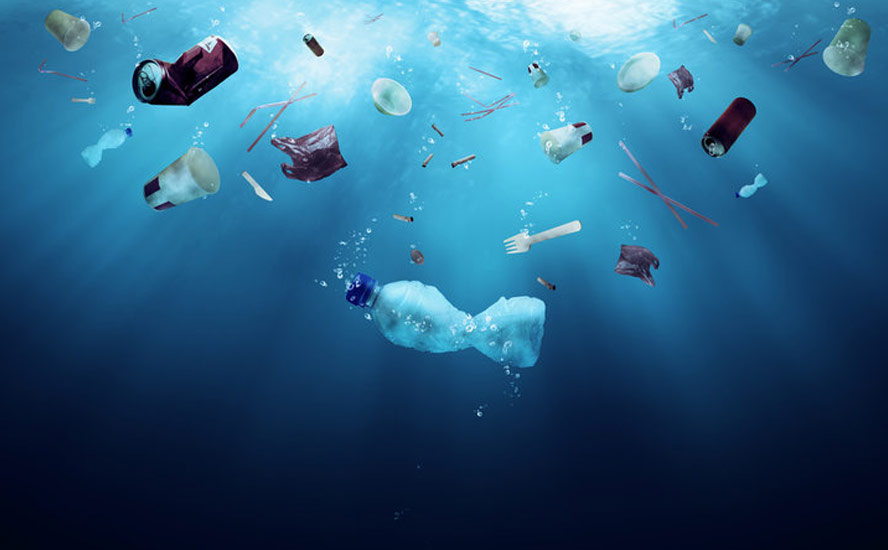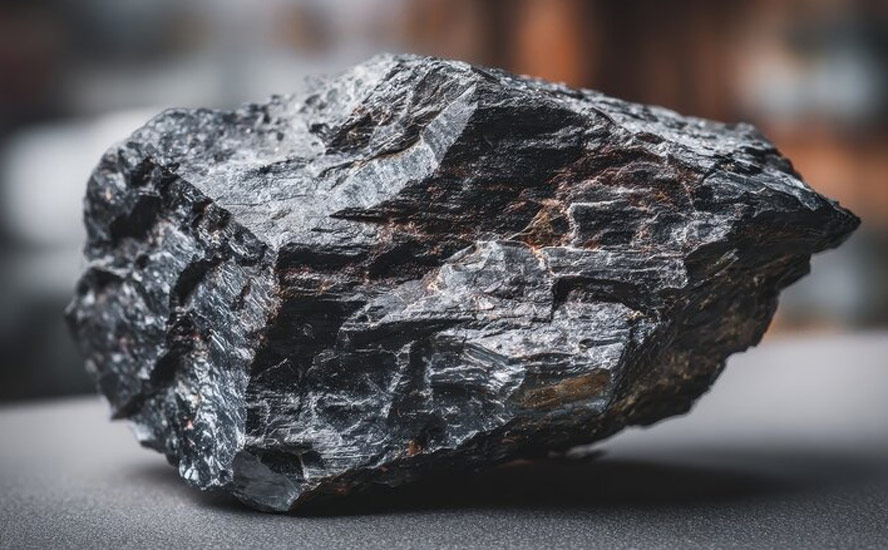Competition for energy and battery metals intensifying
2021.03.23
According to the Institute of Supply Management, via Reuters, last month saw one of the most widespread improvements in business conditions in 30 years, with the composite purchasing managers’ rising to 60.8 in February, the highest level since February 2018 and before that May, 2004.
The Organization for Economic Cooperation and Development (OECD) put out a forecast saying that the global economy will rebound to pre-pandemic levels by the middle of this year, at 5.6% growth. This is much better than predicted only a few months ago. In early December, the Paris-based organization forecast 4.2% growth in 2021 and 3.7% in 2022.
The revised numbers for the United States are particularly impressive. The US economy is expected to grow 6.5% this year, nearly double the OECD’s December forecast of 3.2%. The economy shrank in 2020 by 2.3%, or around half a trillion dollars.
US unemployment is finally starting to improve after several months of high jobless figures. Employers added 379,000 jobs in February, nearly doubling the projection and pushing the unemployment down to a more respectable 6.2%.
The OECD thinks the US’s planned $1.9 trillion stimulus package, including direct payments of $1,400, will add more than one percentage point to global growth, boost Canada’s and Mexico’s GDP by 0.5% to 1%, and between a quarter and half a percent in the EU and China.
The largest consumer of commodities, and a key driver of metals prices, is expected to grow its economy by a blistering 7.9%. Chinas was the only major economy last year to post a positive economic output figure, having managed to move past the pandemic faster than other countries, despite covid-19 originating in the Chinese city of Wuhan.
The current narrative of higher bond yields, driven up because bond holders are selling to take profits and getting into more risky assets like stocks, and robust global growth, on account of trillions in covid stimulus and economic recovery funding yet to be doled out, also has a subtext of pent-up consumer demand.
What happens when millions of people whose spending has been forced online, get inoculated and start shopping again?
The result is almost certain to be inflationary.
According to estimates by Bloomberg Economics, consumers in the world’s largest economies amassed $2.9 trillion in extra savings during covid-related lockdowns — with half of that total, $1.5 trillion, in the US alone. Bloomberg notes the $2.9T is at least double the average annual growth of gross domestic product seen during the last expansion, and equivalent to the annual output of South Korea.
Americans are reportedly squirreling away their money like never before, thanks to $1,200 stimulus checks and other covid relief programs. (another $1.9T has just been passed). At the end of 2020, US banks held a record $17.8 trillion in deposits.
Americans have never been big savers, though, so for us at AOTH it is a sure bet that, once mask mandates and restrictions on group gatherings and the like are lessened or rescinded, folks are going to spend like drunks on a booze cruise. Continued low interest rates will encourage the opening of wallets and purses to levels likely not seen in decades.
BNN Bloomberg reports that, should all the money saved over the past year in the US be spent, it would propel economic growth as high as 9%.
What will a global recovery look like? According to a recent piece in Project Syndicate, authored by Michael Spence, a Nobel laureate in economics,
In the second half of 2021 and into 2022, the K-shaped dynamic of the pandemic economy will give way to a multi-speed recovery, with the traditional high-contact sectors taking the lead.
Among the most important to watch are international travel — clobbered by the pandemic due to flyers’ fears of getting in a plane with 300 other potential covid-19 hosts — retail, hospitality, entertainment, and sports, all of which will re-open for an eager public.
Vaccines are expected to be made available to most North Americans by this summer and to Europeans by early fall. Assuming that there are no hiccups to mass inoculations, the most likely scenario is for a global recovery during the second half of this year and into 2022. Spence, a former dean of the Graduate School of Business at Stanford University, writes:
All told, this return to previously closed consumption patterns, turbocharged by pent-up demand, will produce a burst of growth in depressed sectors, leading to improved economic performance overall. Unemployment will almost certainly fall, even if permanent changes in living and work patterns reduce employment in some areas.
Commodities super-cycle
Substantially better economic growth rates naturally will push the demand for commodities higher.
The last commodities super-cycle, starting in 2003, was driven by China, which demanded almost every commodity under the sun to meet double-digit annual increases to its GDP. This time is different. I believe we are going to see demand across the board for nearly every type of commodity, based on infrastructure renewal, electrification, reduction of carbon, and food demand.
Goldman Sachs agrees that the next structural bull market for commodities will be driven by spending on green energy.
BNN Bloomberg states The world’s metals producers stand to benefit from increasing electrification, and not just in the transport sector. BloombergNEF estimates that global copper demand in both the clean power and the clean transport sectors will double in the next decades, to almost 5 million tons per year. Copper demand this year is expected to be about 24 million tons, so that jump would be a material increase.
Metal’s demand
The challenges most countries are facing right now are daunting. Not only do they need to have a plan for recovering from covid-19, but also the supply chains that have been interrupted or broken by the virus must be repaired.
On top of the covid crisis there is a climate crisis, and for lack of a better term, a “technology” crisis. Governments must make funding available for 5G networks so that businesses are not left behind as the world moves more into digitization and automation which require robust internet and cellular infrastructure.
The fossil-fueled based transportation system needs to be electrified, and the switch must be made from oil, gas, and coal-powered power plants to those which run on solar, wind and thorium-produced nuclear energy. If we have any hope of cleaning up the planet, before the point of no return, a massive decarbonization needs to take place.
In a recent report, commodities consultancy Wood Mackenzie said an investment of over $1 trillion will be required in key energy transition metals over the next 15 years, just to meet the growing needs of decarbonization.
A green infrastructure spending push will mean a lot more energy metals will need to be mined, including lithium, nickel, and graphite for EV batteries; copper for electric vehicle wiring and renewable energy projects; silver for solar panels; rare earths for permanent magnets that go into EV motors and wind turbines; and tin for the hundreds of millions of solder points necessary in making the new electrified economy a reality.
Europe’s Green Deal
The European Union has positioned itself as a global climate leader by investing heavily in clean energy and green technology.
In December 2019, the European Green Deal was announced by the European Commission, the EU’s executive body. It aims to “transform the Union into a modern, resource-efficient and competitive economy, where there are no net emissions of greenhouse gases by 2050.”
At the end of 2020, Europe’s hottest year on record, the EU made an ambitious decision to reduce its GHG emissions by at least 15% from 1990 levels by 2030.
According to another Project Syndicate article, meeting this target will require $417 billion of additional investment annually.
Biden’s push
Meanwhile US President Joe Biden is lobbying for a dramatic jump in infrastructure spending over the coming weeks. Media reports say it could cost as much as $4 trillion. A report published recently by the American Society of Civil Engineers (ASCE) has validated the nation’s success in improving its infrastructure, while justifying the need for additional government spending.
Long before the ASCE “report card”, Biden, along with the Democratic-run House and Senate, has been planning for a massive, longer-term infrastructure spending spree after the covid aid package is enacted.
Under his “Build Back Better” plan, Biden campaigned to spend over $7 trillion on initiatives, with US infrastructure being the centerpiece. These include a big jump in spending on surface transportation, airports, transit systems, as well as addressing high-speed broadband, electrical grids and water systems and boosting electric vehicle charging and high-speed rail.
“We are so far behind the curve,” Biden said last month ahead of a meeting with labor leaders. “We rank something like 38th in the world in terms of our infrastructure — everything from canals to highways to airports.”
The president added that the US needs to do “everything we can do…to make ourselves competitive in the 21st century.”
Towards that goal, Biden has vowed to dramatically boost electric vehicles and charging stations. (eg. 500,000 new plugs over the next decade, 5X the amount currently; replace the federal government’s fleet of 650,000 vehicles with EVs)
California, meanwhile, is pressuring the new president to up his green game. This week the state’s two senators urged Biden to set an end date for gas-powered car sales, as the White House re-writes vehicle emissions rules slashed under Trump.
Gov. Gavin Newsom has already signed an executive order requiring all new cars and passenger trucks sold in California to be emissions-free by 2035.
California is far from alone. Its emissions standards are followed by 13 other states and the District of Colombia, accounting for over 40% of the US population, Reuters said.
Car manufacturers, too, are jumping on board. General Motors aims to stop the sale of all gas-powered cars and trucks by 2035, while Volvo and Ford’s European division both expect to be fully electric by 2030.
Shareholder pressure
In fact, some of the worst-polluting companies are facing shareholder pressure both to cut emissions and to be more transparent about disclosing their amounts.
On Monday Climate Action 100+, the leading climate-focused investor group, released a report showing how well each of the 159 companies, whose assets total $54 trillion under management by Climate Action 100+, is doing in terms of the Paris Climate Agreement.
If all the companies, which includes oil majors like Exxon Mobil, Saudi Aramco, and BP, were added up, they would comprise the third largest polluter behind the US and China.
The report found that no company on the list has fully disclosed how it will achieve the goal of becoming a net zero business by 2050; also, none so far has pledged to align themselves with the Paris agreement goal of limiting the global temperature rise to 1.5 degrees Celsius.
The slow pace of change is prompting investors to back shareholder resolutions demanding better information on company plans for meeting climate goals.
“The Climate Action 100+ Net Zero Company Benchmark shows there is an urgent need for greater corporate action and higher ambition in accelerating the net zero economy and ensuring a safe and viable future,” Reuters quotes Mindy Lubber, CEO and President at sustainability organisation Ceres, and a member of the Climate Action 100+ Steering Committee.
China
Of course, we cannot talk about government-issued decarbonization and electrification efforts without including China, by far the largest metals consumer.
President Xi Jinping last fall announced the country is aiming for carbon neutrality by 2060. (carbon neutral means emitting the same amount of carbon dioxide into the atmosphere as is offset by other means)
With China being the world’s biggest source of carbon dioxide, responsible for around 28% of global emissions, Xi’s pledge was a significant step in fighting global climate change.
However, meeting its carbon-neutral goal and replacing fossil fuels will mean a 75% increase in electricity demand, and equates to a $6.4 trillion investment in new power generation capacity, according to a new report from Wood Mackenzie quoted by South China Morning Post.
Growth will primarily come from solar, wind and energy storage.
Yet even this level of commitment may not be enough.
As China pushes ahead with its plans — the Asian superpower is already the world’s largest manufacturer of wind turbines, solar modules, and EV batteries — Woodmac believes that Beijing will be challenged to secure supplies of certain raw materials critical to the shift toward clean energy/ transportation, namely copper, aluminium, nickel, cobalt, and lithium.
Most notably, China’s dependence on foreign miners for its copper supply is a major concern, says Woodmac, via SCMP. The firm believes China will need another 7.5 million tonnes of copper every year, based on current usage levels. (global mined production is only 2Mt).

The continued move towards electric vehicles is a huge copper driver. In EVs, copper is a major component used in the electric motor, batteries, inverters, wiring and in charging stations. An average electric vehicle contains about 4X as much copper as regular vehicles.
Yet China controls only 16% of global mining of the raw material.
“This has fueled the country’s determination to seek greater control of other raw materials,” said Wood Mackenzie senior economist Yanting Zhou, one of the report’s authors.
Already tight supply
We already have current and emerging structural deficits for several metals, that will keep prices buoyant for the foreseeable future.
Over the past year or so, tight supply is reflected in the rising prices of copper, silver, nickel, zinc, and lead, for example.

As we have reported, without new capital investments, global copper mined production will drop from the current 20 million tonnes to below 12Mt by 2034, leading to a supply shortfall of more than 15Mt. Over 200 copper mines are expected to run out of ore before 2035, with not enough new mines in the pipeline to take their place.
Even with a 30% penetration of EVs, a relatively conservative estimate, we need to find another 20 million tonnes of copper per year over 20 years. And we will still need enough copper for all its other uses, in construction wiring & plumbing, infrastructure build outs, electrical grids, energy storage, 5G, etc.
The upshot? There will not be enough copper for future electrification and energy needs, without a massive acceleration of copper production worldwide.
According to BloombergNEF, demand for Class 1 nickel is expected to out-run supply within five years, fueled by rising consumption by lithium-ion electric vehicle battery suppliers. Nickel’s inroads are due mainly to an industry shift towards “NMC 811” batteries which require eight times the other metals in the battery (first version NMC 111 batteries have one part each nickel, cobalt, and manganese).
Where will mining companies look for new nickel sulfide deposits, from which the extraction of high-grade nickel needed for battery chemistries is economically and technically feasible? The pickings are slim. Only one nickel sulfide deposit has been discovered in the past two decades. The result of such limited nickel exploration is a limited pipeline of new projects, especially lower-cost sulfides in geopolitically safe mining jurisdictions.
Like lithium, graphite is indispensable to the global shift towards electric vehicles; there is more graphite in a lithium-ion battery than lithium.
The World Bank forecasts that lithium batteries will require 4.5 million tonnes of graphite per year by 2050. This is a 500% increase over 2018 production levels and a 318% increase over total mined graphite in 2019. According to the USGS, only 1.1 million tonnes of graphite was mined in 2020.

Supply chain woes
Adding to these pressures, covid-19 has had a dramatic impact on supply chains. Temporary mine closures last year particularly in South America impacted copper and silver production, for example, and delayed planned expansions.
Last week the Wall Street Journal reported that manufacturers around the world are beset by pandemic-related disruptions.
Honda and Toyota have said they may have to halt production at North American plants, due to a shortage of petrochemicals in Toyota’s case, and for Honda, a dearth of semiconductors, combined with port issues and bad US weather.
According to WSJ, “The disruptions underscore how several forces are coming together to squeeze the world’s supply chains, from the pandemic-driven rise in consumer demand for tech goods to a backlog of imports at clogged California ports to U.S. factory outages caused by weather woes. They are creating cost increases and delays for numerous industries, company executives and analysts say, affecting profit margins and the prices that companies and consumers ultimately pay for many goods.”
In other words, these supply chain blockages are driving inflation.
Conclusion
The world’s top carbon emitters are a long way from aligning their climate goals with the Paris climate agreement, something that shareholders are demanding, meaning soon they are likely to seek higher amounts of raw materials needed for decarbonization and electrification.
But the mining industry is already being pressured by governments to mine more battery and energy metals like copper, lithium, nickel, and graphite.
China’s plan to go carbon-neutral by 2060, Europe’s Green New Deal, and Biden’s pivot to clean energy will all create fresh demand, exerting more pressure on metals markets that are currently being undersupplied, even before major decarbonization/ electrification programs roll out.
Everybody — governments, corporations, and individuals — wants to reduce their carbon footprint but the world has finite resources that will make these laudable goals unachievable, without a major push by the mining industry to find and produce more battery – and clean energy metals.
In our opinion, as the competition for materials needed to go clean and green heats up, prices have only one way to go but up.
Richard (Rick) Mills
aheadoftheherd.com
subscribe to my free newsletter
Legal Notice / Disclaimer
Ahead of the Herd newsletter, aheadoftheherd.com, hereafter known as AOTH.
Please read the entire Disclaimer carefully before you use this website or read the newsletter. If you do not agree to all the AOTH/Richard Mills Disclaimer, do not access/read this website/newsletter/article, or any of its pages. By reading/using this AOTH/Richard Mills website/newsletter/article, and whether or not you actually read this Disclaimer, you are deemed to have accepted it.
Any AOTH/Richard Mills document is not, and should not be, construed as an offer to sell or the solicitation of an offer to purchase or subscribe for any investment.
AOTH/Richard Mills has based this document on information obtained from sources he believes to be reliable but which has not been independently verified. AOTH/Richard Mills makes no guarantee, representation or warranty and accepts no responsibility or liability as to its accuracy or completeness. Expressions of opinion are those of AOTH/Richard Mills only and are subject to change without notice. AOTH/Richard Mills assumes no warranty, liability or guarantee for the current relevance, correctness or completeness of any information provided within this Report and will not be held liable for the consequence of reliance upon any opinion or statement contained herein or any omission. Furthermore, AOTH/Richard Mills assumes no liability for any direct or indirect loss or damage or, in particular, for lost profit, which you may incur as a result of the use and existence of the information provided within this AOTH/Richard Mills Report.
AOTH/Richard Mills is not a registered broker/financial advisor and does not hold any licenses. These are solely personal thoughts and opinions about finance and/or investments – no information posted on this site is to be considered investment advice or a recommendation to do anything involving finance or money aside from performing your own due diligence and consulting with your personal registered broker/financial advisor. You agree that by reading AOTH/Richard Mills articles, you are acting at your OWN RISK. In no event should AOTH/Richard Mills liable for any direct or indirect trading losses caused by any information contained in AOTH/Richard Mills articles. Information in AOTH/Richard Mills articles is not an offer to sell or a solicitation of an offer to buy any security. AOTH/Richard Mills is not suggesting the transacting of any financial instruments but does suggest consulting your own registered broker/financial advisor with regards to any such transactions
Legal Notice / Disclaimer
Ahead of the Herd newsletter, aheadoftheherd.com, hereafter known as AOTH.Please read the entire Disclaimer carefully before you use this website or read the newsletter. If you do not agree to all the AOTH/Richard Mills Disclaimer, do not access/read this website/newsletter/article, or any of its pages. By reading/using this AOTH/Richard Mills website/newsletter/article, and whether you actually read this Disclaimer, you are deemed to have accepted it.




























